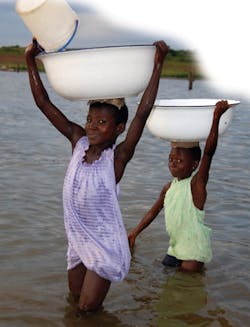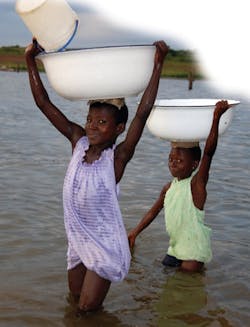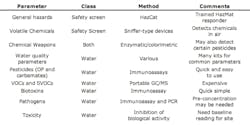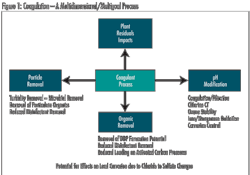Taps,Toilets and the World Bank
Meeting the MDG target of reducing the amount of people without access to basic sanitation is looking unlikely. As a result, more investment into delivering water and sanitation services is required. Where is it going to come from and how much of a priority is water for the World Bank? Julia Bucknall and Daniel Shemie, who lead the water sector of the Bank, talk exclusively to WWi.
Two girls in Volta Lake, Ghana, collecting water
When most people think of global water challenges, they think of access to taps and toilets. And for good reason, the number of people without access remains daunting: 2.5 billion with no sanitation and 887 million without access to safe water. But there are grounds for optimism. Since 1990, 1.6 billion have gained access to safe water and, according to the UN, the world will likely reach the Millennium Development Goal (MDG) of halving the proportion of people without access to clean water by 2015.
Unfortunately, there is also cause for concern. Despite significant improvements, it is likely that one billion people will miss the MDG for sanitation. Lack of sanitation generates damaging economic losses, and is frequently among the first challenges after natural disasters, often killing people who survived the disaster itself. In conflict-affected areas too, it is often the cause of high mortality rates. We see this in cholera outbreaks, several of which have occurred around the world just in this last year.
According to the WHO/UNICEF Joint Monitoring Program, access to safe drinking-water and to basic sanitation can vary widely. Access to improved sources of drinking-water can mean having a household connection but it can also mean access to rainwater drained from a roof and stored in a container. One could rightly assume that this implies people can take for granted that the water is safe to drink. In reality, few families in Delhi, Cairo or Mexico City are comfortable, rightly or wrongly, to drink straight from the tap.
Likewise, while access to improved sanitation can mean access to a flush toilet, it can also mean access to dry pit latrine. While the latter may sound less attractive to some, it would be a lifesaver to more than a third of humanity.
The World Bank's Agenda
Widespread failure to invest in sanitation generates important economic losses. For example, a recent Bank study (WSP (2008) Economic Impacts of Sanitation in Southeast Asia) estimates Cambodia, Indonesia, the Philippines and Vietnam lose an approximately $9 billion a year because of poor sanitation.
Of the four countries, those with the least sanitation coverage have significantly higher per capita losses. Inadequate water supply can also have a negative impact on even the healthiest economies. The external cost of water currently amounts to about 2.3% of China's GDP, of which 1.3% is attributable to scarcity of water, and 1% to direct impacts of water pollution.
The World Bank's water agenda, outlined in the 2003 Water Resources Sector Strategy, encompasses more than basic access to water and sanitation services.
The Bank works on all fronts of the water sector, including hydropower, flood protection, water resource management (surface and groundwater), agricultural water management (irrigation and drainage), in addition to water supply and sanitation. Our engagement is not limited to the pump room. We also seek to share expertise to help decision-makers in government make informed choices. With this in mind, the Bank participates in and often leads debate on global problems related to water, such as food security, international river disputes and climate change adaptation.
Investments throughout 2010
In 2010, the World Bank's water lending totalled $5.7 billion, of which, $4.2 billion supported water supply and sanitation projects. In addition to building infrastructure, these resources helped reform the way the public sector manages water systems. Such reforms are often directed towards making utilities financially independent so they can deliver services without burdening the taxpayers. Indeed, successful reforms combine delivery of better services to more poor people with increased accountability of utilities to all customers. Cambodia's Phnom Penh Water Supply Authority (PPWSA), for example, has connected 90% of Phnom Penh's 1.3 million residents to a reliable supply of water that is safe for drinking and on tap 24/7. The World Bank also frequently supports the expansion of basic access to rural and peri-urban inhabitants. In rural Bangladesh, for example, the World Bank supported local governments to ensure that 1.5 million people gained access to arsenic-safe water and 1.2 million to safe sanitation through replication of best practices by local governments.
Another initiative supported by more than 20 donors, the Water and Sanitation Program's Global Scaling Up Rural Sanitation social marketing campaign, has resulted in an estimated 8.2 million people in Indonesia, India and Tanzania gaining access to, and using toilets. Over 5,000 communities have become Open Defecation Free. To date, project costs of $6.6 million have leveraged an additional $33 million of public sector investment, along with $47 million of household financing to pay for rural sanitation services. As World Bank lending has risen in response to the global financial crisis, so too have annual commitments to water.
Commitments for water supply and sanitation more than doubled from 2008 levels to reach $4.3 billion in 2009, a record year. This increase kept pace with the Bank average, of which water lending traditionally represents 10%.
Throughout 2010 the Bank approved 87 projects with a water supply and sanitation component, which we expect will deliver improved water supply to an estimated 26 million people, and improved sanitation to another 12 million. The Bank is also monitoring 197 active projects it has funded with a total of $16.3 billion.
The East Asia and Pacific Region, led by demand from China, represents the largest share of current commitments in water supply and sanitation lending with 26%, followed closely by Latin America and the Caribbean (21%) and sub-Saharan Africa (17%). Sub-Saharan Africa has the largest number of projects, with 227 since 2003. Lending to South Asia for water projects is increasingly rapidly, led in part by large demand from India.
Predictions for 2011
Looking to the future, lending to water projects is likely to remain high in 2011, as the World Bank sustains its support for a global recovery. Sanitation should continue to receive increased attention as the international community redoubles its efforts to achieve the MDGs. But after 2012, capital constraints will likely result in a significant decline in World Bank lending, bringing it back to pre-crisis levels. The World Bank will continue to support water infrastructure construction and upgrades, favoring projects that take an integrated approach, linking water use to resource management. The Bank will also remain engaged on population growth, urbanisation and climate change.
Lack of sanitation generates damaging economic losses, warns the World Bank
In response to these challenges, we anticipate increased demand for non-conventional water, including water reuse and groundwater recharge. Accordingly, our water experts will continue to support the private sector arm of the Bank, IFC, in attracting additional investment to the sector. Support for public institutions will remain at the heart of our work.
Toilets and taps are important, but to save and improve lives, they need to be effectively operated and maintained. That takes skilled people, strong institutions, sound policies and disciplined regulation.
Author's note: Julia Bucknall is water sector manager and Daniel Shemie is a junior professional associate in the water sector at the World Bank. For more information of the World Bank's Water Strategy, please consult: Sustaining Water for All in a Changing Climate: World Bank Group Implementation Progress Report of the Water Resources Sector Strategy, available at www.worldbank.org/water.
More Water & WasteWater International Current Issue Articles
More Water & WasteWater International Archives Issue Articles




